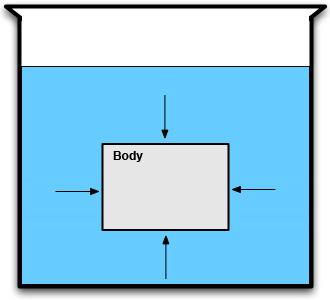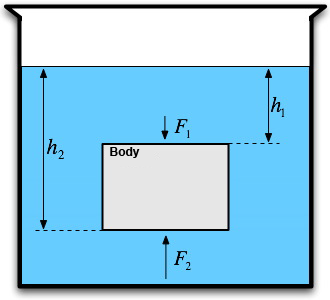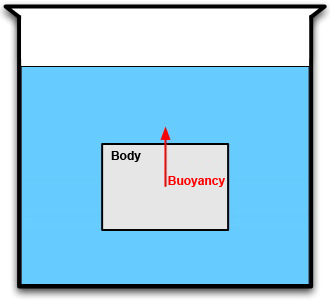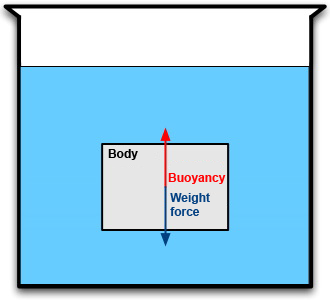Buoyancy
If a body is submerged in water, pressure exerts on it from every side (see picture below). The forces which act sidewards are equal, because they have the same distance from the water level. Due to the fact that these forces neutralise each other, we don't have to consider them in the following.

Fluid pressure increases with depth and is dependent upon the fluid's density. The more dense a fluid is, the more the pressure increases with depth. It is also important to know that the pressure is equal in all directions at a certain point in the fluid (the same force per unit of area exerts downwards, upwards and sidewards). The pressure on a body submerged in a fluid always exerts vertical to the body's surface.
If we submerge a body into a fluid (see picture below), the pressure on its bottom is greater than on its top. This difference in pressure occurs due to the fact that both ends of the body are located in different depths in the fluid. (h1 and h2 ).

The force F1, which exerts vertically downwards, is smaller than the force F2, which exerts exactly in the opposite direction. The difference of F2 and F1 is called buoyant force (FA ).


The buoyant force is dependent upon the volume (V ) of the submerged body and the density of the fluid (ρ). The following formula is used to calculate the buoyancy:

The buoyant force FA exerts in the opposite direction of the gravitational force (G ) of the submerged body (see picture below).
- suppose FA < G, and the body sinks.
- suppose FA > G, and the body rises.
- suppose FA = G, and we can differentiate between two cases:
- if the submerged body and fluid have the same density, the body floats in the fluid.
- if the submerged body is less dense than the fluid, the body floats on the fluid.

